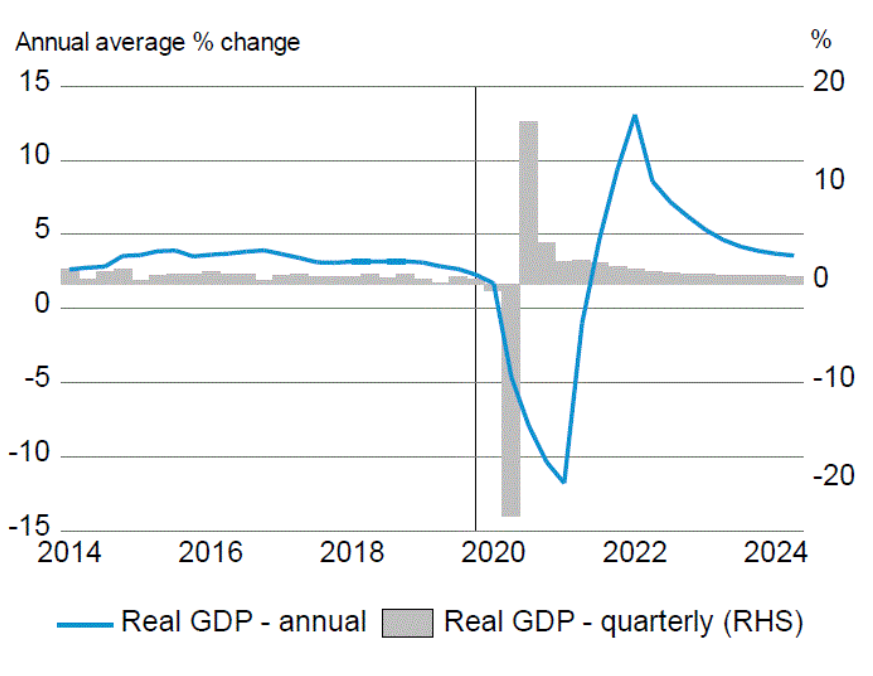In today’s dynamic world, with changing demographics, revenue pressures, leadership demands, and evolving technology, succeeding as a technology executive requires a multifaceted approach. Understanding diverse market trends and adapting to various demographic changes are essential for staying relevant in a competitive landscape. These leaders must navigate the pressures of maintaining and increasing revenue while dealing with the intense demands placed on them.
Additionally, as technology evolves rapidly, executives must stay ahead of trends and use new tools to enhance their strategic vision. Balancing cost-cutting with innovation is crucial to keeping organizations agile and competitive. Effective technology leaders should foster innovation, invest in continuous learning, and build resilient teams ready to adapt to challenges and opportunities.
Understanding Current Market Trends
As a technology executive, it’s important to understand current market trends and their impact on the industry. This means staying updated on technology advancements and changes in consumer behavior and preferences. Here are some ideas on how to keep up with current market trends:
- Attend industry conferences and events: Industry conferences and events offer a great chance to network with tech executives, learn about the latest trends, and gain insights from thought leaders.
- Follow industry publications and blogs: Stay informed by regularly reading industry publications and blogs related to your field. This will help you stay up to date on the latest developments, as well as gain a deeper understanding of market trends.
- Engage with your peers: Joining professional groups or online communities is a great way to connect with other tech executives. Engaging in discussions and sharing knowledge helps expand your network and keeps you updated on industry trends.
- Conduct market research: Keep a pulse on the market by conducting regular research and analysis. This can involve gathering data from various sources, such as customer surveys, competitor analysis, and industry reports.
- Embrace continuous learning: To stay ahead in the fast-paced tech industry, continuously learning and adapting is crucial. This can involve taking courses, attending workshops or webinars, or simply reading books and articles related to your field.
- Build partnerships: Collaborating with other companies in the industry can provide valuable insights into current market trends. By collaborating and sharing knowledge, you can benefit from each other’s expertise and stay updated on the latest developments.
By staying up to date with market trends, technology executives can better understand their target audience’s needs and make informed decisions to drive innovation and remain competitive in the changing business landscape. A proactive approach, anticipating future trends and adapting strategies, is also crucial.
Technology Executive Leadership Qualities
Beyond technical expertise, successful technology executives need robust leadership abilities. This involves communicating effectively with team members and stakeholders, understanding their needs, and inspiring them to achieve shared goals. Below are some key leadership skills and ways to cultivate them:
- Communication: Technology executives must communicate complex technical information effectively to team members, clients, and business stakeholders. This requires strong verbal, written, and interpersonal skills.
- Strategic thinking: Strategic thinking is crucial for making informed decisions that align with organizational goals and drive success. This involves considering long-term implications and potential outcomes before taking action.
- Adaptability: In today’s rapidly changing business landscape, technology executives must be adaptable and open to change. This means being able to pivot quickly when necessary and embracing new ideas and technologies.
- Emotional intelligence: Strong emotional intelligence enables tech executives to understand their own and others’ emotions, using this insight to effectively lead and motivate their teams.
- Collaboration: The ability to collaborate and work well with others is essential for technology executives. This involves fostering a culture of teamwork, actively listening to different perspectives, and valuing the input of team members.
As a technology executive, continuously developing leadership skills is essential to navigate the changing business landscape and drive innovation in your organization.
Project Management and Risk Assessment
Moreover, a technology executive must be proficient in project management and risk assessment. In this fast-paced industry, it’s vital to handle multiple projects at once while effectively evaluating potential risks. Here are some suggestions for acquiring skills in project management and risk assessment:
- Project management certification: Consider getting a project management certification like PMP or CAPM. These certifications demonstrate knowledge and proficiency in project management principles and techniques.
- On-the-job experience: Nothing beats hands-on experience when it comes to mastering project management and risk assessment skills. Taking on challenging projects and actively managing risks can help you develop a strong understanding of the process.
- Mentorship: Reach out to experienced technology executives or project managers for mentorship opportunities. They can provide valuable guidance, share real-world experiences, and help you develop your skills through practical advice.
- Attend workshops/seminars: Look for workshops or seminars that focus on project management and risk assessment. These events often provide opportunities for interactive learning, networking, and gaining insights from industry experts.
- Read relevant literature: Expand your knowledge by reading books, articles, and case studies related to project management and risk assessment. This will not only enhance your understanding but also give you practical tips and techniques to apply in your work.
By developing these skills, technology executives can lead teams and manage projects to drive success in the evolving tech industry.
Relationship Building
Building strong relationships with clients and partners is vital for success as a technology executive. It involves understanding their needs, delivering effective solutions, and maintaining open communication to foster trust and collaboration. Here are some suggestions to enhance your relationship-building skills:
- Active listening: When interacting with clients or partners, actively listen to their needs and concerns. This shows that you value their input and are dedicated to finding the best solutions for them.
- Regular communication: Regularly stay in touch with clients and partners to keep updated on changes or new developments. This also allows for open dialogue and addressing any issues that may arise promptly.
- Provide exceptional service: Delivering high-quality products and services is crucial for building strong relationships with clients and partners. Make sure to consistently meet or exceed their expectations to build trust and loyalty.
- Be proactive: Anticipate potential problems affecting clients or partners and take proactive steps to address them. This shows that you are invested in their success and willing to go the extra mile.
- Foster a culture of collaboration: Encourage open communication, teamwork, and collaboration within your organization and with clients/partners. This creates a positive working relationship and promotes mutual respect and trust.
In conclusion, the role of a technology executive goes beyond merely having technical expertise. It requires strong leadership, excellent project management, risk assessment skills, and the ability to build and maintain relationships with clients and partners. Leadership involves inspiring teams to achieve goals, while project management ensures projects are completed on time and within budget.
In addition, risk assessment is vital in anticipating potential challenges and developing strategies to mitigate their impact. Additionally, building relationships with clients and partners is key for trust and collaboration, leading to new opportunities and growth. By honing skills and staying informed on industry trends, tech executives can navigate the changing landscape and drive success.








